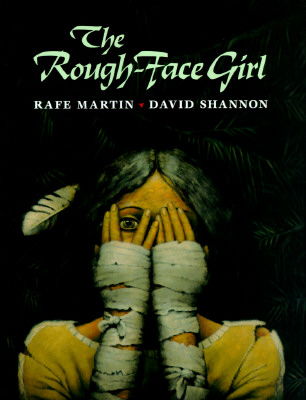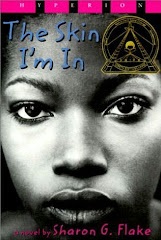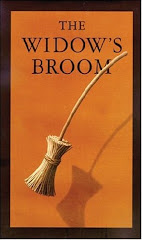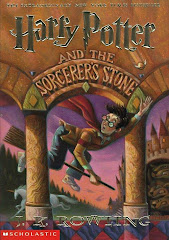A. Baseball Saved Us
B. Ken Mochizuki
C. Dom Lee
D. Lee and Low Books Inc., 1993
E. picture book, historical fiction
F. 1-4
G. This book is about a young Japanese boy living in a relocation camp during World War II. He starts by talking about how he was bad at baseball outside of the camp and how all the other boys made fun of him. However, in order to pass the time and to keep the kids occupied, the boy's father decides to build a baseball field. The boy plays baseball and becomes very good at it while in the camp. When the Japanese are finally released, he goes back to playing baseball at school. A comment from a person in the stands makes him mad and he hits a homerun, winning the game for his team and thus proving to himself and his teammates that he is a good player and a good person.
H. I love the language used in this book. It's very easy to follow and it seems as though a real boy could have written it and that way, I think it will be a lot easier for young readers to get involved with the book. I also like how the descriptions were very straightforward and not sugarcoated. It made me feel as though Mochizuki wanted to relay the facts without eliciting a whole lot of sympathy; he simply wanted to state the facts. It was also good to see that this book and Weedflower reinforced each other in terms of the descriptions of the camps. That proves to me as an educator that both books contain valuable historical material and are not just meaningful stories.
It amazes me that with both Weedflower and Baseball Saved Us, the authors strove to show how the Japanese overcame their situations. Sumiko had her flowers and the boy had baseball. I just can't believe how resourceful and upbeat these people were even after everything they'd gone through. I know that if I had been forcefully relocated for no good reason, I doubt I would have been able to find something to be happy about. But these books provide a great lesson that you must play the hand you are dealt.
The illustrations were also very interesting to me. I have never before seen any art done with beeswax (at least as far as I know). I thought that was an interesting medium to use. Each picture has so much texture in it that I wish it weren't a print. I want to touch it! Also, all the pictures are monochromatic until the last two pages where the boy hits the homerun. This is a good indication of the blandness of camp life. And perhaps also a good indication of the dusty, arid climate. I also liked that the ending of the story was not told in text, it was told through the illustrations.
I. Baseball Saved Us provides many great lessons. The most obvious one is that this book is a great introduction into forced relocation and the plight of Japanese-Americans in WWII. I wouldn't use this book with older readers simply because the content of the book is a little too elementary for children who have already been exposed to this theme. With younger elementary students, I would lead a discussion about a time when they had seen something that was unfair and what they did about it or what they would do differently if it happened again. Also, this book provides a lesson on how to deal with things in life when life isn't exactly going the way we planned or hoped. It's a fact that bad things happen to good people but the best people can turn those bad things into at least a better thing (if not a good thing). I would ask students to think of a time when something happened that made them mad or upset. Then we would talk about ways that they could have made the situation better or ways that they did make the situation better. I would also ask kids to try to imagine how it would feel for this to happen to them and how they would react.
*Multicultural*
Subscribe to:
Post Comments (Atom)










1 comment:
Well written critique Jenny; I appreciate your very detailed descriptions and reactions to the illustrations. And yes, the main characters in both Weedflower and Baseball Saved Us were hopeful and held on to objects or memories to give them this hope. I like your ideas for discussion. Very thoughtful!
Post a Comment